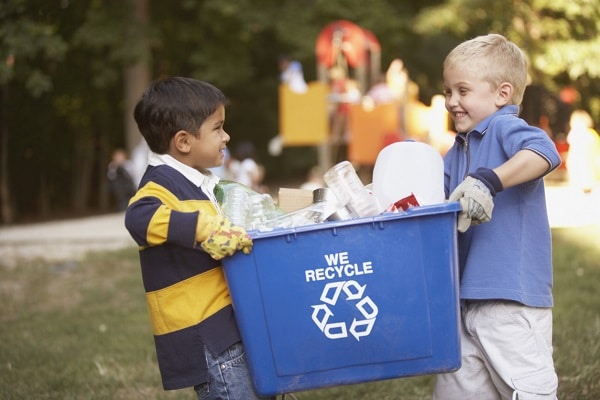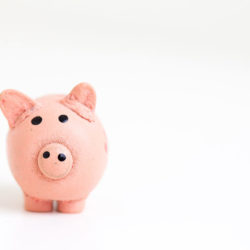Photo from www.greenandgrowing.org
Taking care of the earth is one of the first responsibilities God gave to humans. It is a practical way of showing reverence and love for our Creator. And it is one of the most precious gifts parents can give to their children — to ensure that they will grow up in an environment that supports healthful living, offers sustainable resources, and preserves the beauty and majesty of creation.
We can make caring for the earth a lifestyle by practicing the 3Rs: reduce, reuse, and recycle.
Reduce
This means acquiring less stuff and being wise in choosing what we do acquire. The goal is to avoid cluttering up our home with non-essentials and filling our planet with rubbish. How can we practice this at home?
- Shop in your closet. Before heading to the mall to shop for new outfits or accessories, go through your closet. Chances are you’ll discover something that will suit the occasion you have in mind. You might even find stuff you’ve forgotten you have! “Shopping” in your closet can help you save money, curb the impulse to buy what you don’t really need, and keep you from unknowingly duplicating your purchases.
- Take care of what you have. Keep your possessions in good condition to extend their usefulness. Store seldom-used items properly to avoid damage caused by moisture and insects. Do needed repairs as soon as possible. Consume perishables before their expiry date.
- Choose products with less packaging. Less packaging means less stuff to throw away. That’s why it’s a good idea to buy staple items in bulk or choose products packaged in reusable/recyclable containers (such as glass or fabric).
- Donate your surplus. Share your extras instead of keeping them all to yourself. It will prevent spoilage in your pantry, free up space in your closet, administer an antidote to greed, and make you a blessing to others.
- Segregate trash. Separate organic from inorganic wastes. Set aside what can be reused and recycled. Make it your goal to produce as little waste as possible and dispose of your garbage responsibly.
To reduce also means to lessen your energy consumption. The goal is to avoid depleting the earth’s resources and to ensure that there will be enough for all. To help conserve energy at home, you can:
- Turn off appliances when not in use. This is a basic but often forgotten rule. Turning off the lights and unplugging electronic devices you won’t be using for a while will not only help to lower your electricity bill but can also keep your home safe from fire.
- Use natural lighting and ventilation whenever possible. Think skylights and wide windows. Or switch to renewable energy sources (solar or wind-powered instead of coal or gas-powered). It’s also a good idea to disconnect from gadgets from time to time and re-connect with other people and with nature. Schedule a family time outdoors where you and your kids can explore the natural world and enjoy each other’s company.
- Eat more vegetables and fruits, and less meat and meat-based products. You don’t have to turn vegetarian—just reduce your meat intake. This is because producing meat and meat-based products use up a lot more energy than producing plants and plant-based food. You can also grow your own vegetables even if you live in the city with limited space (think container gardening).

Reuse
This means to use an item more than once before disposing of it as waste. The goal is to minimize waste products and conserve resources as well as the energy used to produce those resources. What supplies can we reuse at home?
- Fresh, clean water is a precious commodity! Just because we happen to have a plentiful supply does not mean it is okay to waste it. Bath water and can be saved in buckets and used to flush the toilet or rinse the bathroom floor after a scrubbing. Water used to wash vegetables, fruits, and rice can be used to water plants.
- Kitchen scraps. Vegetable cuttings and seeds can be planted in pots on your kitchen windowsill. Fruit and veggie peels can be mixed with soil in a compost pit or bin to make compost, which in turn would make great fertilizer for plants.
- Glass jars that used to contain store-bought sandwich spreads can be cleaned and used as containers for kitchen spices and sweets for the kids. You can also use them to store bathroom essentials such as cotton balls and Q-tips, or tiny toys such as marbles and LEGO bricks, or art materials such as paint brushes and beads.
- Shopping bags/gift bags/plastic bags. Shopping bags and gift bags are usually made of card stock or laminated paper, so you can reuse them several times—just be mindful of their load limit. It’s also a good idea to always bring your own reusable eco-bag when shopping for groceries. And plastic bags from the supermarket may be used to line trash cans or donated to small store owners or market stall vendors.

Recycle
This means to convert a used item that would otherwise be discarded into another usable object. The goal is to reduce waste and exercise creativity. How can we make recycling at home a habit?
- Use leftovers to make a new dish. Instead of just heating up those odds and ends in the refrigerator, why not concoct something new and tasty? Leftover veggies can be used to make a veggie omelette, leftover meat can be turned into burger patties, and of course stale bread is the main ingredient for French toast!
- Designate recycle bins. Have separate bins for aluminium cans, plastic bottles, glass bottles, and paper. These are items you can sell, so clean and dry them before storing. You can also have another bin for miscellaneous stuff—items you can’t sell but still find some use for (see the next point).
- Use recyclable materials for arts and crafts. Tissue paper tubes, used/leftover gift wrapper, paper and fabric scraps, paper bags, plastic cutlery—these are just some of the many items from the recycle bin that you and your kids can creatively use to make puppets, toy figures, fashion accessories, home decorations, etc.
- Go online for recycling ideas. Just type “recycling ideas” in your search box, feast your eyes on the images, and get inspired to start recycling today!

Daffodil Castro Dedel discovered her love for writing when she was a child. Since then she has written poems, short stories, magazine articles, and curriculum for schools and churches, several of which have been published. She developed and edited Creation Care, a one-year Sunday school curriculum on stewardship for children, which was published by Church Strengthening Ministry where she currently serves as Editorial Manager.
Related Posts
-
How to Make Working at Home Work for You
Working at home is not always easy, but it has its rewards, like seeing your…
-
Becoming a Better Leader at Home
A man's responsibility is to be a better leader in his own household, one that…
-
Money Habits to Develop this 2018
Bad money habits consume much of our time and resources, and the only solution is…




